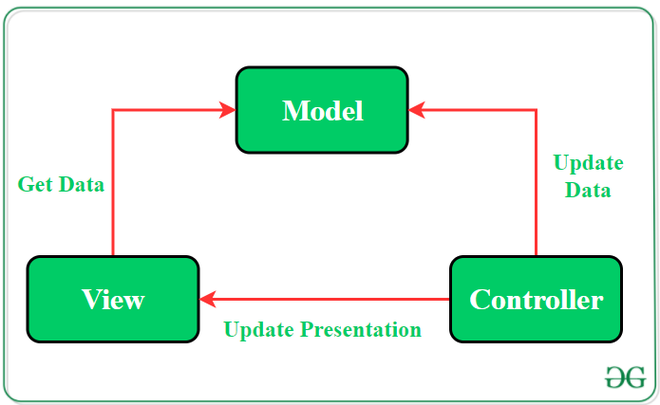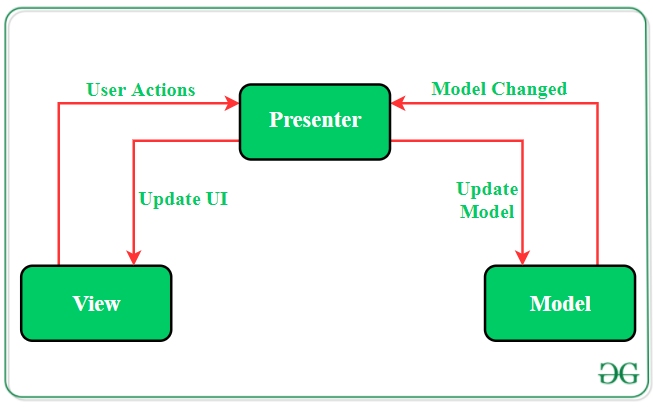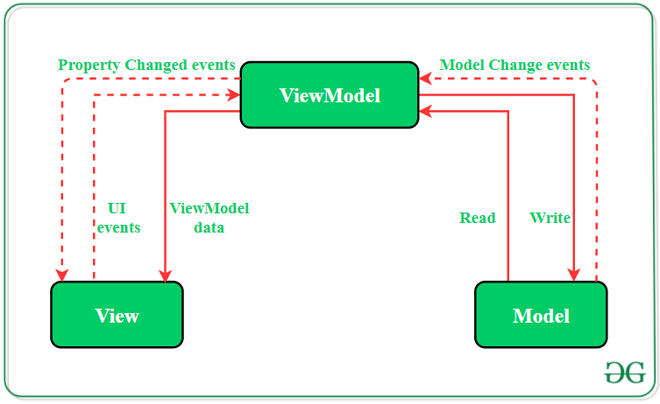
When developers work on a real mobile application whose nature is dynamic and will expand its features according to the user’s need, then it is not possible to write core logic in activities or fragments. To structure the project’s code and to give it a modular design(separated code parts), architecture patterns are applied to separate the concerns. The most popular android architectures used by developers are the following:
The main idea of all these patterns is to organize the project in a proper way so that all the codes get covered in the Unit Testing. Moreover, it is very helpful in the maintenance of the software, to add and remove features and developers can keep a track of various crucial logic parts.
MVC pattern is the oldest android app architecture which simply suggests separating the code into 3 different layers:

In MVC schema, View and Controller both depend upon the Model. Application data is updated by the controller and View gets the data. In this pattern, the Model could be tested independently of the UI as it is separated. There are multiple approaches possible to apply the MVC pattern. Either the activities and fragments can act like the controller where they are responsible for data processing and updating the views. Another way is to use the activities and fragments as Views and the controller, as well as Models, should be a separate class that does not extend any Android class. If the Views respect the single responsibility principle then their role is just to update the Controller for every user event and just display data from the Model, without implementing any business logic. In this case, UI tests should be enough to cover the functionalities of the View.
Advantages:
Disadvantages:
MVP pattern is the second iteration of Android app architecture. This pattern is widely accepted and is still recommended for upcoming developers. The purpose of each component is easy to learn:

In the MVP schema, View and Presenter are closely related and have a reference to each other. To make the code readable and easier to understand, a Contract interface class is used to define the Presenter and View relationship. The View is abstracted and has an interface in order to enable the Presenter for Unit Testing.
Advantages:
Disadvantages:
The third iteration of android architecture is the MVVV pattern. While releasing the Android Architecture Components, the Android team recommended this architecture pattern. Below are the separate code layers:
The MVVM and MVP patterns are quite similar because both are efficient in abstracting the state and behavior of the View layer. In MVVM, Views can bind itself to the data streams which are exposed by ViewModel.

In MVVM schema the View informs the ViewModel about various actions. The View has a reference to the ViewModel while ViewModel has no information about the View. The many-to-one relationship that exists between View and ViewModel and MVVM supports two-way data binding between both.
Dependency on Android API